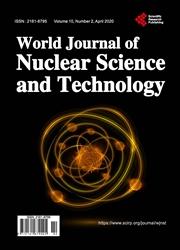Design and Analysis of a Metallic Uranium Reactor Type-Pump Using the Magnesiothermy Process
引用次数: 1
Abstract
This paper shows a methodology to obtain metallic uranium through a magnesiothermy process. Chile has two experimental reactors operated by the “Chilean Nuclear Energy Commission” (CCHEN). One is 5 MW and the other is 10 MW. In order to fulfill international agreements about nuclear energy for testing purposes of these reactors, CChEN purchased 19.9% enriched uranium hexafluoride, also known as the limit of Low Enriched Uranium (LEU). Due to the capacity of these reactors, they need high-density uranium compounds for their fuel, in order to work with LEU. For this reason, the uranium needs a previous conversion into metallic uranium. The conversion laboratory carried out experiences for reduction of UF4 with Mg. The main purpose of this study was to analyze the operating conditions under which the reduction reaction takes place, the designed method and the equipment and materials used. The raw material used was dehydrated UF4, prepared by electrolytic reduction and commercial purity Magnesium. The reaction took place in a cylindrical reactor made of low alloy steel, with a conic section in the lower part. The internal zone was coated with a 2.5 cm thick layer of CaF2. The process started by applying external heating, according to a heating program, developed specially for this purpose. The reduction reaction took place starting at 650°C. The result was a cylinder of uranium metal and MgF2 slag. The crossed cut uranium cylinder showed a smooth and homogeneous surface without inclusions of slag, pores or blisters. The yield of the reaction was of the order of 75% with respect to the expected theoretical value. The uranium cone obtained fulfilled the required conditions for source material for nuclear fuel fabrication, with a uranium content of 97.5%.镁热法金属铀反应堆型泵的设计与分析
本文介绍了用镁热法制取金属铀的方法。智利有两个实验反应堆,由“智利核能委员会”(CCHEN)运营。一个是5兆瓦,另一个是10兆瓦。为了履行有关这些反应堆试验用核能的国际协议,中国化工集团公司购买了浓度为19.9%的六氟化铀,也就是低浓缩铀(LEU)的极限。由于这些反应堆的容量,它们需要高密度的铀化合物作为燃料,以便与低浓铀一起工作,因此,铀需要事先转化为金属铀。转化实验室开展了用Mg还原UF4的经验。本研究的主要目的是分析还原反应发生的操作条件、设计方法和使用的设备和材料。原料为UF4脱水,经电解还原和工业纯镁制备。反应发生在一个由低合金钢制成的圆柱形反应器中,下部有一个锥形截面。内部区域涂有2.5 cm厚的CaF2层。这个过程首先是根据专门为此目的开发的加热程序应用外部加热。还原反应开始于650℃。结果是一个由金属铀和MgF2渣组成的圆柱体。经交叉切割的铀筒表面光滑均匀,无夹渣、气孔、泡。该反应的产率相对于预期理论值约为75%。所制得的铀锥,铀含量为97.5%,满足了核燃料制造原料的要求。
本文章由计算机程序翻译,如有差异,请以英文原文为准。
求助全文
约1分钟内获得全文
求助全文

 求助内容:
求助内容: 应助结果提醒方式:
应助结果提醒方式:


